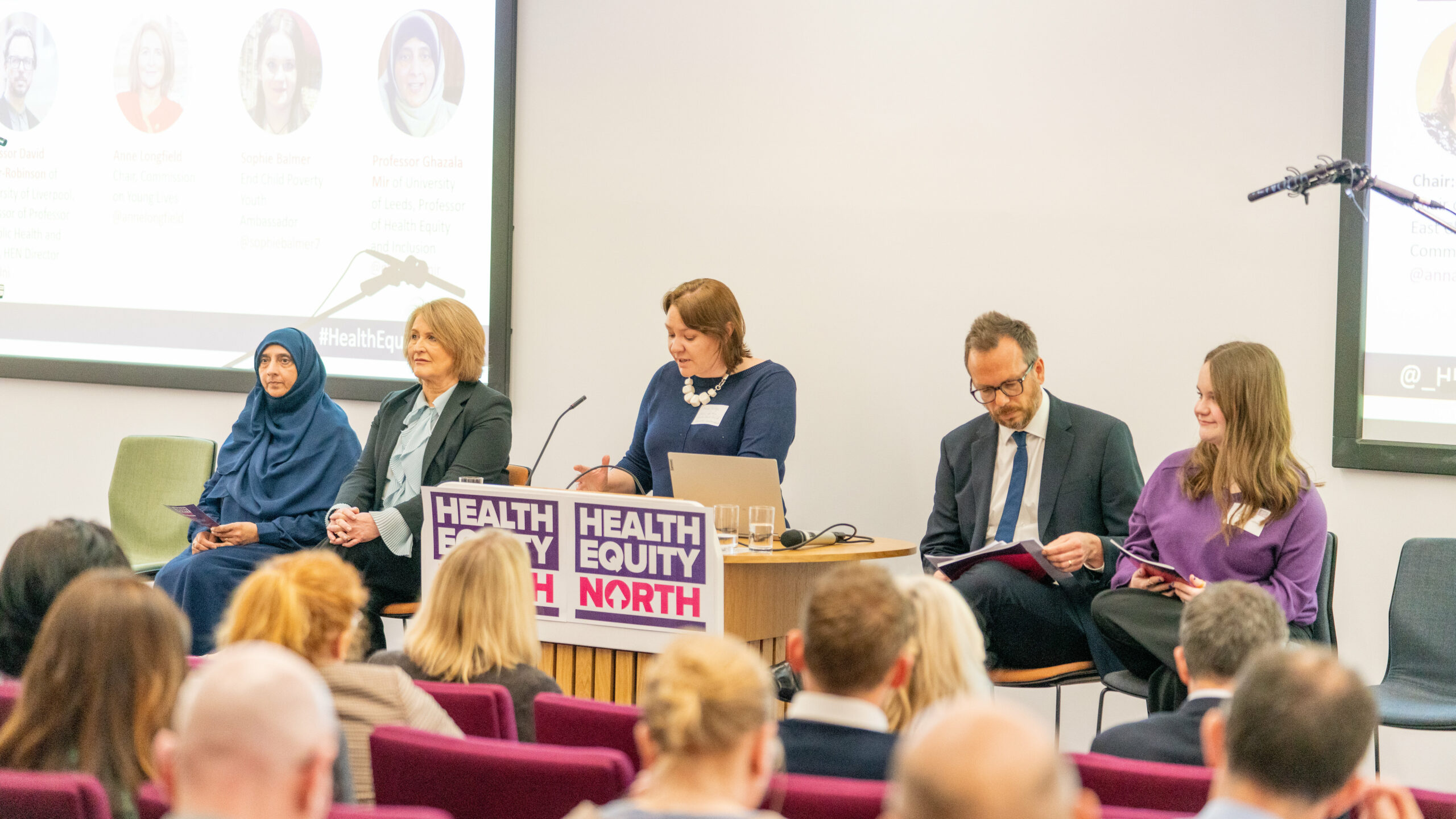Key facts

Our vision is to end health inequity through research, policy impact, and public health improvement.
Health inequalities in the North of England
- People born in the North can expect to live at least one year less than the English average.
- The North East of England has the lowest life expectancy – around three years less than the best performing regions
- Across the North there is an average of 4 deaths per 1,000 live births compared to 3 deaths per 1,000 live births in London and the South East – this equated to an extra 144 infant deaths in the North in 2021
- Of the 72 local authorities in the North of England, 52 (72%) have lower levels of very good or good health than the national average
- The North has higher rates of bad/very bad health with 6.9% of people in the North East, 6.4% in North West, and 5.9% in Yorkshire and the Humber reporting bad/very bad health – compared to the English average of 5.3%
- The North has the highest rates of people who report that their day-to-day activities are limited a lot by a disability: North East (9.8%), North West (9.1%), Yorkshire and the Humber (8.2%) – compared to the English average of 7.5%
- The five local authorities with the highest levels of people who report a disability limits their day-to-day actives a lot are located in the North: Knowsley (North West; 13%), Liverpool (North West; 12.7%), Blackpool (North West; 12%), Manchester (North West; 11.4%), and Hartlepool (North East; 11.3%)
- The North has higher rates of economic inactivity due to ill health or disability: 5.7% in the North East, 5.3% in the North West, 4.7% in Yorkshire and the Humber – compared to the English average of 4.1%
- The top five local authorities with the highest levels of economic inactivity due to long-term sickness or disability are in the North
- More people in the North state that they provide unpaid care – in the North East 10.1%, the North West 9.7%, and Yorkshire and the Humber is 9.3%, compared to the English average of 8.9%
- The proportion of constituencies with child poverty above 40% is twice as high as the rest of the country.
- 1 million households are ‘fuel poor’ – meaning people struggle to afford to heat their home.
- Children in the North are more likely to be living in food insecure homes than those in the rest of England and inequalities between households with and without children are larger in the North.
- Around 2,500 deaths could have been prevented if ‘Levelling Up’ of the North had occurred pre-pandemic.
- Rates of long COVID are 30% higher than the rest of the country
- The COVID pandemic negatively affected mental health across England, but those in the North experienced the largest and most prolonged hit to mental health
- Men live 3.7 years fewer and women 3 years fewer than the national average.
- The ‘left behind neighbourhoods’ have nearly twice the proportion of people out of work due to sickness than the England average.
Sources:
Health Equity North report: 2023
Child Poverty and the Cost of Living Crisis: A report prepared for the APPG Child of the North
Northern Exposure by by Professor Clare Bambra, Dr Natalie Bennett, Dr Luke Munford and Sam Khavandi
The Paralell Pandemic: COVID-19 and Mental Health
Overcoming health inequalities in ‘left behind’ neighbourhoods



